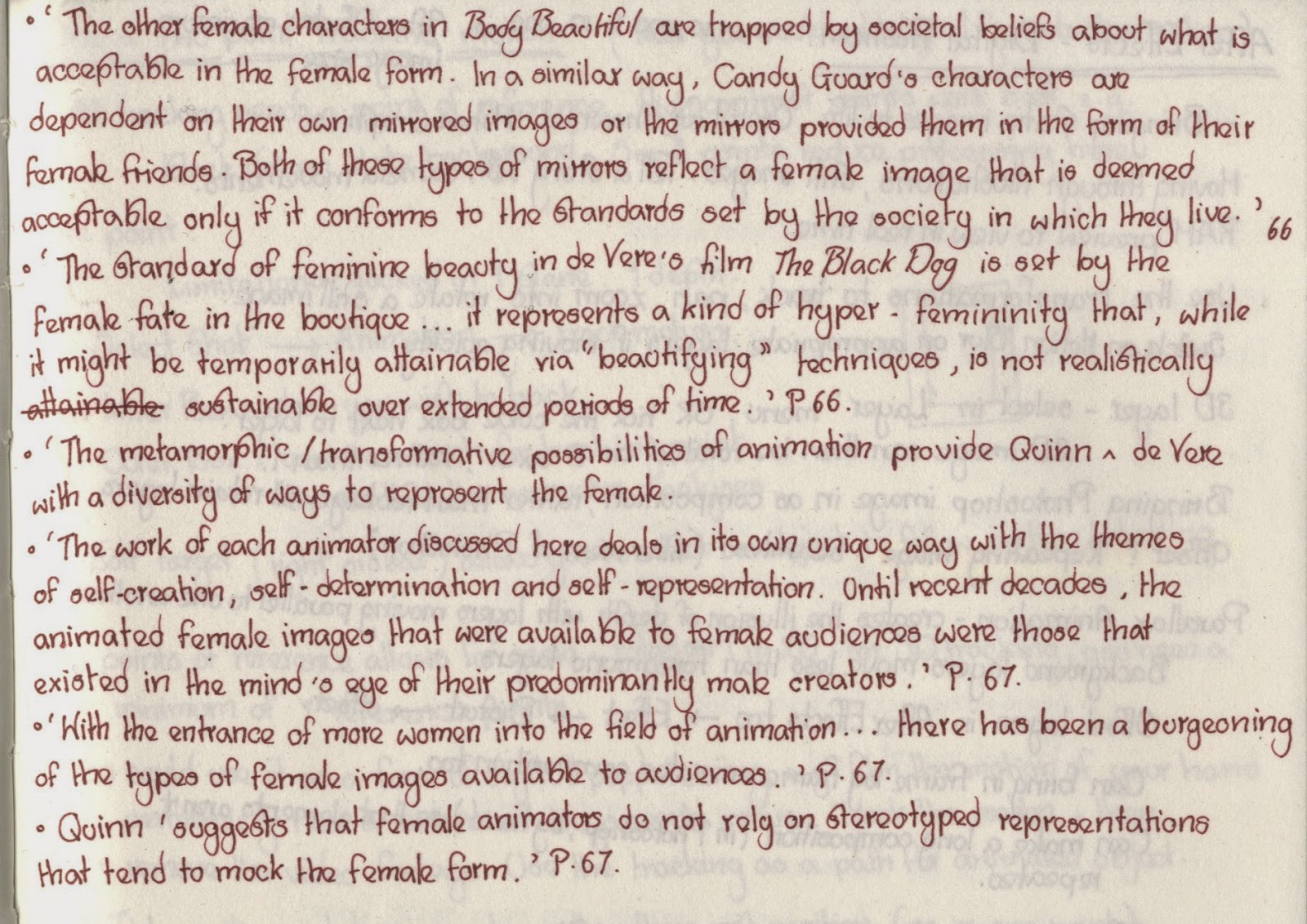Unfortunately, due to demands from other modules, I have had to curb my ambitions for my Creative Response. I simply will not have time to model a character as a puppet, or even a clay sculpt. However, I have still considered how the character will function as a puppet during the design process. Even more disappointingly, I have decided to focus on a single character, rather than the proposed pair. While I may have been able to produce two separate designs, I would rather allow more time to develop a single character in more depth. Perhaps I will be able to return to this project at a later date, perhaps over summer, and realise my original intentions of creating stop motion puppets.
As I had already begun to develop the 'attractive' character, I will continue to work with her. To begin with, I sketched out a number of different body shapes, inspired not only by popular animated characters, but also real life women.This was a result of discovering during the course of my research that a number of Disney Princesses were designed around the appearances of contemporary icons. For example, Sleeping Beauty was apparently inspired by Audrey Hepburn's willowy figure. This may account for changing trends in female representation over the years, depending on what body shape is fashionable, just as artists' favoured feminine features have changed over the centuries.

The next stage in my design process was to look at the face. Oddly, with beautiful 2D characters (from Jessica Rabbit, to Betty Boop, to Cinderella), their faces can be remarkably bland and featureless, with extremely large almond eyes, cupid's bow lips and little else, with only a hint of a nose when seen in profile. Yet despite this trend, some have more personality than others. 1950s Disney princesses are, in my opinion, incredibly bland. They bear more than a passing resemblance to barbie dolls: dead behind the eyes, with little expression. However, later heroines have been granted more vivacity, although it is hard to pinpoint what it is in the designs which make Belle and Ariel more appealing than Cinderella, as it is undoubtedly not just when animated that their faces are more expressive.
Drawing the faces was, for me, quite challenging. I struggled to escape the confines of realism, and draw a character rather than a person. I studied the faces of beautiful women, such as Marilyn Monroe, to decide on which features were important, before exaggerating these features (face shape, eyes, mouth). Stop motion characters follow similar conventions to 2D characters, in terms of facial design, with an emphasis on eyes and mouth (the sources of emotion and expression). Yet I tried to imbue my character's face with a little more character besides.
 |
The defining features of my character are her flowing red hair
(which has connotations of a seductive fieriness), a heart shaped
face and large, emotive eyes. |
With a firm idea of what my character's face would look like, it was then time to combine face and body designs. Of all the body shapes I had explored, I felt that a combination of the two would work best: an hourglass figure, with broad hips to accommodate a sturdy armature, yet svelter, and more willowy than 'bombshells' such as Jessica Rabbit.
I also felt that clothing can contribute a lot to how 'attractive' a character is, and indeed whether she invites the male gaze. Corsets, garters, close fitting bodices, sweetheart necklines all create the impression of a woman intended to be objectified. I wished my character to have a slightly more subtle appeal, and not be a garish parody of Mulvey's 'exhibited' woman. Consequently, I created a figure hugging gown, with a fishtail shape which would accentuate the hourglass shape. As the 'female gaze' is apparently the result of a reflection of our ideal ego, I hoped that beautiful clothing and hair would make her an object of female desire too.


























